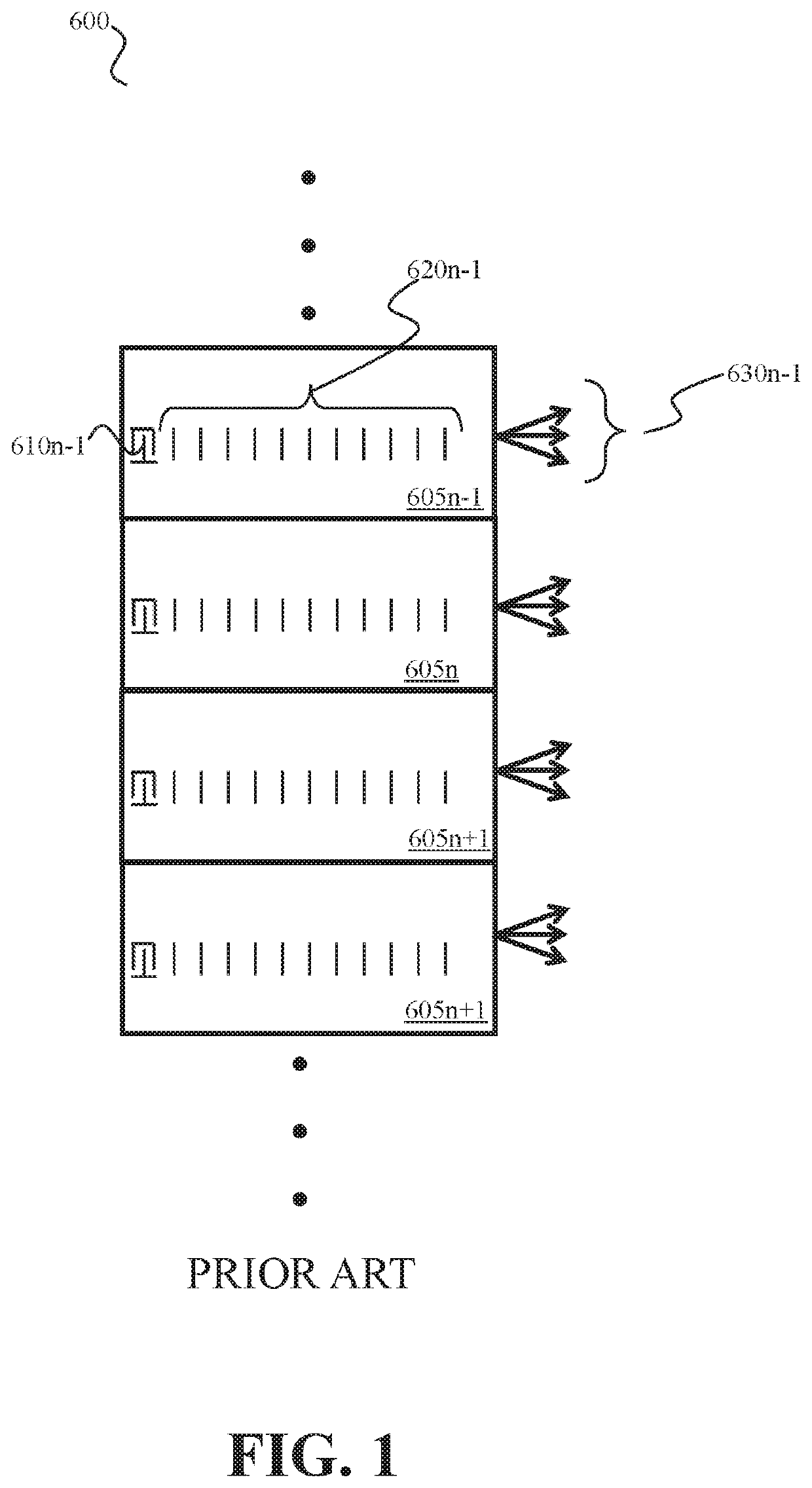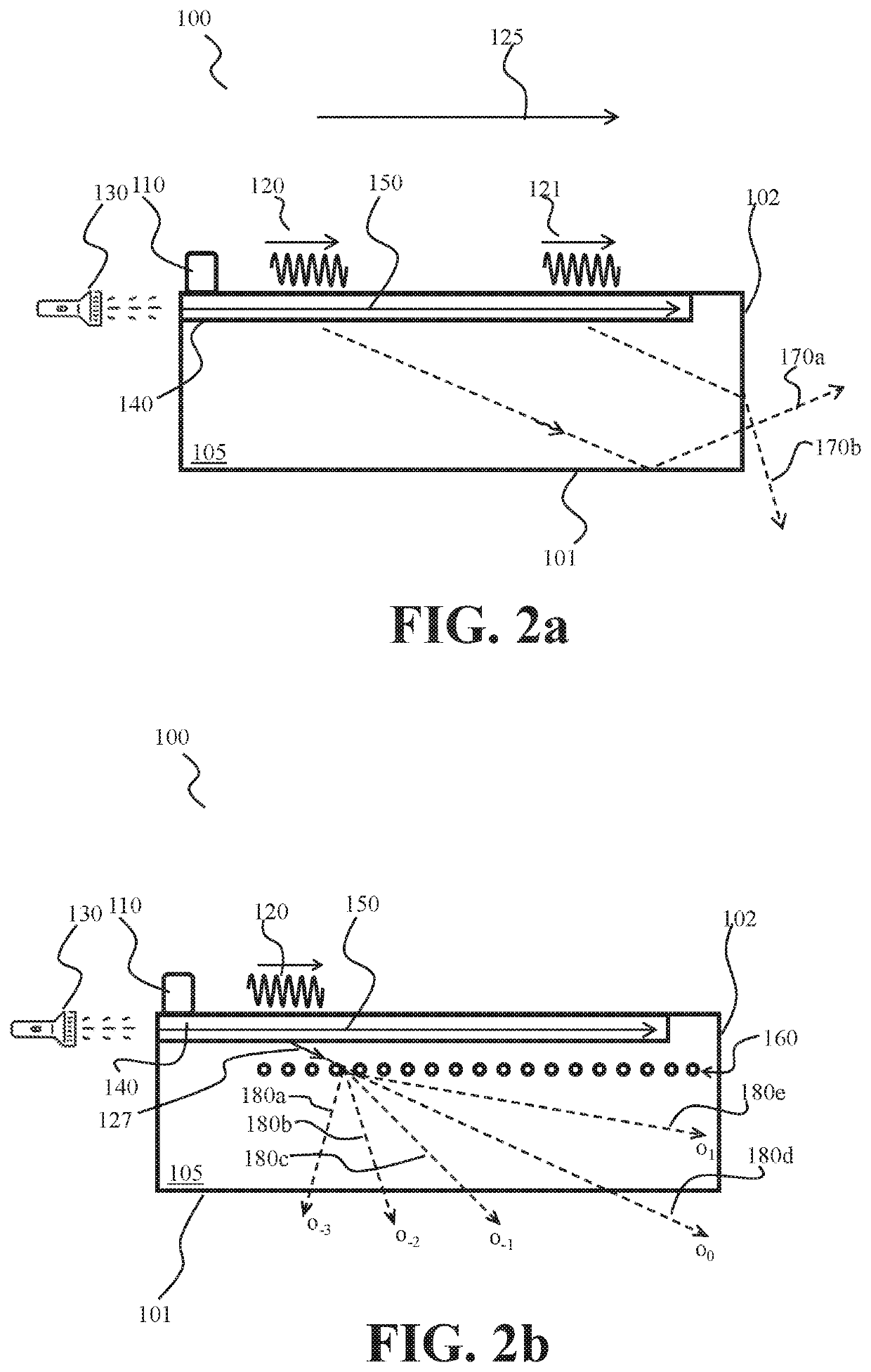Structures for modifying leaky mode light
a technology of leaky mode and light, applied in the field of structures for modifying leaky mode light, can solve the problems of difficult and expensive fabrication of gratings in leaky mode devices, large apertures, thicker, etc., and achieve the effect of increasing the view zone and increasing the field of view
- Summary
- Abstract
- Description
- Claims
- Application Information
AI Technical Summary
Problems solved by technology
Method used
Image
Examples
Embodiment Construction
[0025]This Application claims priority as a continuation-in-part to U.S. Non-provisional application Ser. No. 15 / 955,670, titled “Structures for Modifying Leaky Mode Light,” the first inventor of which is Daniel Smalley, which was filed on Apr. 17, 2018, and which in turn claims priority to U.S. Provisional Application No. 62 / 486,326, titled “Structures for Modifying Leaky Light Mode,” the first inventor of which is Daniel Smalley, which was filed on Apr. 17, 2017, and which is incorporated herein by reference in its entirety.
[0026]A system and method are disclosed for using structures to redirect leaky mode light to bottom exit instead of side exit, and further to split light from illuminated SAWs into different orders, and further to overcome and / or mitigate drawbacks associated with bottom exit leaky mode light for flat-screen and near-eye architectures.
[0027]Table of Reference Numbers from Drawings:
[0028]The following table is for convenience only, and should not be construed to...
PUM
| Property | Measurement | Unit |
|---|---|---|
| size | aaaaa | aaaaa |
| grating periods | aaaaa | aaaaa |
| time | aaaaa | aaaaa |
Abstract
Description
Claims
Application Information
 Login to View More
Login to View More - R&D
- Intellectual Property
- Life Sciences
- Materials
- Tech Scout
- Unparalleled Data Quality
- Higher Quality Content
- 60% Fewer Hallucinations
Browse by: Latest US Patents, China's latest patents, Technical Efficacy Thesaurus, Application Domain, Technology Topic, Popular Technical Reports.
© 2025 PatSnap. All rights reserved.Legal|Privacy policy|Modern Slavery Act Transparency Statement|Sitemap|About US| Contact US: help@patsnap.com



